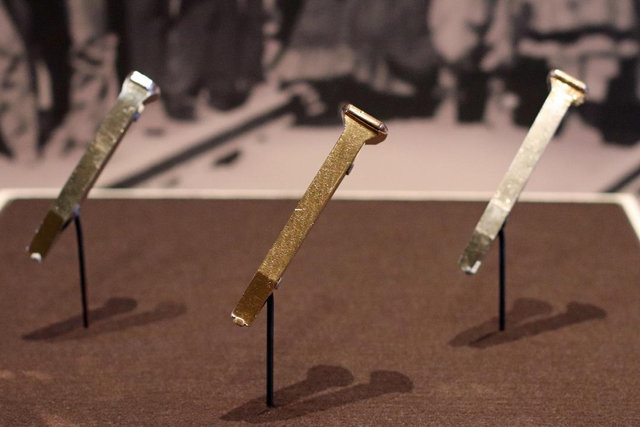While many know about this iconic artifact, few are aware of the other ceremonial items at Promontory Summit and the surprising twists in their stories.
Commissioned by San Francisco businessman David Hewes, the original Golden Spike was made of 17.6-carat gold alloyed with copper and engraved with inscriptions honoring the railway’s completion and its part in unifying the nation. Driven symbolically at the May 10, 1869, ceremony, it was later donated to Stanford University, where it remains on display.
Other symbolic artifacts from that day competed for their place in history.
- Nevada’s silver spike, inscribed with pride and weighing 25 troy ounces, is exhibited at Stanford's Cantor Center for Visual Arts, along with the original Golden Spike.
- Arizona’s tri-metal spike of iron, silver and gold is now on loan to the Union Pacific Railroad Museum.
- A lower-quality golden spike, donated by a San Francisco newspaper, vanished - possibly lost in the 1906 earthquake.
- A ceremonial maul and polished laurel tie, used during the event, also played key roles - though the tie was destroyed in the same earthquake.
As an artifact, the Golden Spike is historical, but stories about what became of it approached mythical status. In 1937, Historian Robin Lampson claimed the original spike had been lost, based on a miscaptioned photo. He repeated the claim in 1970, asserting that "a historical symbol second only to the Liberty Bell" had been lost to posterity. Then, in 2005, Hewes descendants revealed a second golden spike, long held as a family heirloom. Cast alongside the first, it featured an updated engraving with the correct ceremony date and now resides in Sacramento’s California State Railroad Museum.
Though never truly “driven,” the Golden Spike continues to symbolize innovation, ambition and unity. It reminds us how railroads reshaped the nation - and how artifacts carry stories that evolve over time.
